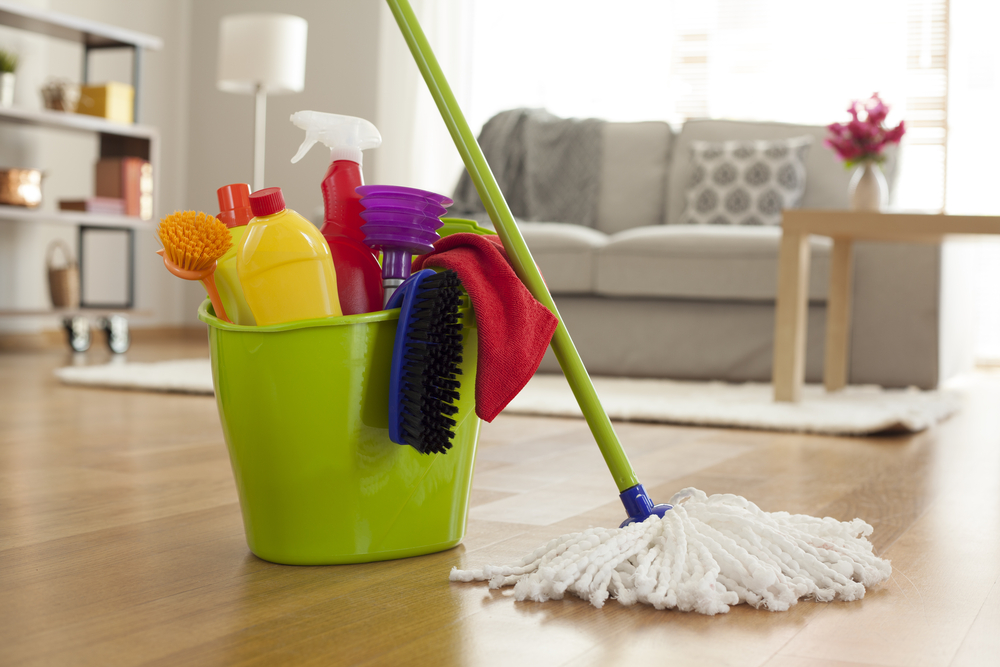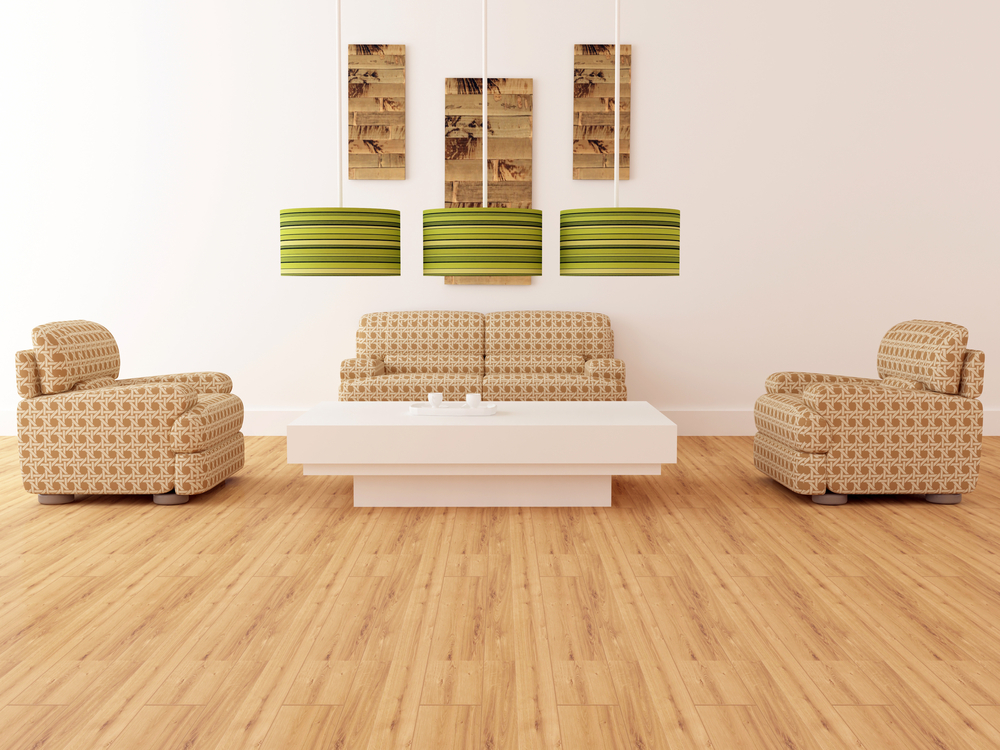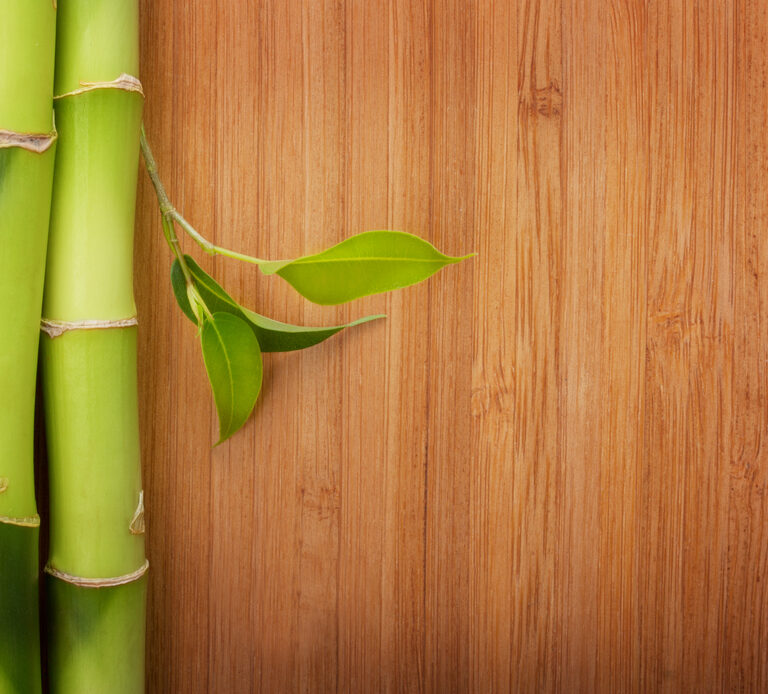Bamboo floors are a fantastic way to spruce up your home with an elegant, yet durable, type of flooring. Bamboo floors are known for their increased damage resistance when compared to other types of hardwood flooring, but they do need to be maintained and cleaned regularly if you want to keep its durability and pleasing appearance around.
If you’re new to owning bamboo floors or simply want to know the best way to clean your bamboo flooring, you’re in luck! In this article, we discuss the best way to lightly clean or deep clean your bamboo flooring, and the most recommended ways to protect your floors in the future.
Why Do Bamboo Floors Require Specialized Cleaning?
Like other types of hardwood flooring, bamboo floors require a cleaning that doesn’t involve lots of water, steam, or harsh abrasives; this is due to the nature of the bamboo. While it is fairly durable and resistance to water and scratches, the material will warp and deteriorate when introduced to too much moisture, steam, or harsh cleaners.
No matter what type of bamboo you have, solid or engineered, you need to clean it with caution to prevent ruining the appearance and luster of the flooring.
You also need to use soft cleaning materials, as anything too stiff or with a harsh scrubber attached to it will scratch up the flooring, leaving lasting marks that ruing the look of the bamboo flooring.
Materials You Will Need to Clean Bamboo Floors

These materials are all you need to lightly and deep clean your bamboo flooring, leaving it spotless and preventing further deterioration of the floor.
- Vacuum: To be safe for your bamboo, the vacuum needs to have a felt head and no beater bar. We recommend this one if you are in search of a suitable vacuum.
- Microfiber Mop: Make sure to also have a plastic bucket for the mop.
- Soft-bristled Broom: Soft bristles, like the one on this broom, are essential for cleaning without damage. Make sure to also have a dust pan to sweep dirt into.
- Dry Cotton Towels
- Soft Sponge: Be careful not to use a stiff sponge with a scrubbing side, as this may scratch up your floors.
Microfiber Cleaning Cloth - Commercial Hardwood Cleaner: We recommend this brand, as it is residue and wax-free, in addition to being non-abrasive.
- Distilled White Vinegar
Depending on how deep you are cleaning, you may not need all of these materials. Make sure to read and understand your chosen method of cleaning to prepare yourself before gathering your items and getting started.
Step-By-Step Guide to Cleaning Bamboo Floors
Depending on how dirty your bamboo floors are, there are multiple ways to clean them. You can opt for the method that discusses lighter cleaning options, or if your floors are heavily soiled, go for the method that covers deep bamboo floor cleaning.
Method One – Light Cleaning
This method is best used on floors that are lightly soiled or just need a little bit of a touch up.
- Before cleaning all of your flooring, make sure to mop up any spills or areas of liquid. You can do this with a soft sponge or a microfiber cleaning cloth. If the spill is sticky or a little bit older, you can dampen your sponge or cloth with water slightly. Be sure to thoroughly dry the area with a damp towel once the spill is gone.
- Sweep or vacuum your floor, making sure to move carefully and not cause any damage. You can use either a soft-bristled broom or a vacuum designed for hardwood floors, depending on your cleaning preference.
- Once you have removed all dust and larger debris, go back over the flooring and look for any areas of stubborn stains or dried up spills. Try to remove them with a damp cloth like in the first step, and if that doesn’t work, apply a small amount of commercial hardwood cleaner to your cloth and use that. Be sure to thoroughly dry the area with a clean cotton towel once the stain is removed.
- Prepare hardwood cleaner in a bucket following the dilution instructions on the package. Dampen your microfiber mop with the solution and then wring out the excess liquid until the mop is just barely wet. Take the mop and clean the floor in a gentle circular pattern; if there are any large wet spots after you are done, use a clean, dry towel to thoroughly dry them.
After you have wet mopped the floor and ensured there are no remaining wet spots on your bamboo, you are finished.
However, if you notice that the floor is still a little bit dull or there are stubborn stains and scuff marks on your flooring, you can proceed to method two for deep cleaning.
Method Two – Deep Cleaning
This method gives you all the instructions you need to deep clean your bamboo floors and remove any stubborn stains and scuff marks.
- After wet mopping and drying the floor, prepare a hardwood cleaning solution according to the instructions on the item. This is sometimes different from the dilution mix used in step four of method one, so make sure to understand the differences between the solutions, if there are any, before mixing materials.
- Once the hardwood cleaner is mixed, take a sponge or microfiber cloth and soak it in the cleaner. Wring out all excess liquid until the cloth is just barely damp and begin scrubbing the floor with it. Be sure not to let pools of cleaner form and apply the solution to all parts of the floor evenly.
- Wipe the floor dry with a towel and check for scuff marks. If there aren’t any, you are finished cleaning. If there are, proceed to step four.
- sing a microfiber cleaning cloth, apply a few drops of undiluted hardwood cleaner. Make sure that the cloth is damp, but not wet.
- Begin cleaning the scuff marks with the cloth, rubbing in the direction of the bamboo grain. It may take a lot of elbow grease to remove the scuff mark, but be diligent and rub at it until it disappears.
- Dry the area with a clean towel if any dampness remains after the scuff mark is removed.
Once deep cleaning is completed and any scuff marks are removed, you are done cleaning your bamboo floors!
Take in the beauty of the floors and follow our preservation techniques to keep them looking their best.
An Alternative to Commercial Hardwood Cleaner
If you want to clean up a heavily soiled bamboo floor, dried-on stains, or stubborn scuff marks, you may not need to resort to a commercial hardwood cleaner. A homemade cleaner made out of vinegar can be a more convenient and economical option in some situations.
To make this cleaner, dilute ¼-cup of distilled white vinegar into a quart of water. Mix the solution up in a plastic bucket and apply it to your microfiber mops and cleaning cloths or sponges in exactly the same way as the commercial hardwood cleaner. Your cleaning materials should be just barely damp with it, not soaking wet.
Remember to never used undiluted vinegar on your bamboo floors, as it is very harsh when used in its pure form and will likely damage the appearance of your bamboo.
How Often Do Bamboo Floors Need to Be Cleaned?
Regular cleaning is the key to encouraging bamboo floors to maintain their appearance and durability. Daily light cleaning is recommended for areas that have high traffic, such as children’s rooms, pet areas, kitchens, and living rooms. Clean stains and spills as they appear, and try to commit to mopping all of your bamboo flooring at least once every one to two weeks, as this will give your bamboo flooring the best appearance.
Preserving Your Bamboo Floors

Once you’re done cleaning your bamboo floors, you can take several steps to ensure that their appearance stays top notch for as long as possible.
Use a Bamboo Safe Cleaner
When cleaning your bamboo floors, you should be staying away from harsh abrasives or hardwood cleaners that offer a polish. You should never use waxes, ammonia, bleach, or baking soda on your floors, as these cleaners will damage the look of the wood and leave behind a sticky residue that ruins the appearance of your floors.
The best cleaners to use on bamboo flooring are gentle, non-abrasive, residue-free commercial hardwood cleaners, or a homemade cleaning product, like the vinegar and water mix we describe above.
Keep Up Regular Maintenance
Making sure to clean your floors regularly and clean up any spills right away is the best thing you can do to protect your bamboo flooring. Regular maintenance will prevent an accumulation of dirt and dust on your flooring that ruins its appearance and is harder to get off in the long run.
Remove Scratches Carefully
You may see scratches appear on your floor from time to time that ruin the overall image of your bamboo flooring. If you want to remove these scratches, make sure you do it carefully, following the steps we outline below.
Clean the scratch and it’s surrounding area thoroughly before wiping the area completely dry with a clean towel. Take very fine grit sandpaper and sand the scratch and the area around it, smoothing and leveling it out. From there, take a wood filler and a foam paintbrush and fill in the scratched area. Once the wood filler is dry, you can coat the area on top with a thin layer of polyurethane to prevent further damage.
Keep in mind that polyurethane finishes cannot be applied to bamboo that already has an oil stain on it. You can read more about bamboo staining and finishes here.
Pay Attention to Dullness
If your bamboo floor starts to look duller over time, it may be an indication that you are not cleaning it enough or with the right materials. Using incorrect cleaning methods on bamboo will leave you with a built-up residue of cleaning methods and dirt, creating a dull, lack-luster finish.
If the dullness is still present after you deep clean your floors, you may need to take some time to sand down and refinish your bamboo flooring, a process you can read about here.
Climate Control Your Home
It may sound strange, but keeping your home at the right temperature can do wonders for the upkeep of your bamboo flooring. You should aim to keep your home at between 60 to 80 degrees Fahrenheit, as this provides the optimal 40 to 60 percent consistent humidity range that bamboo thrive in, allowing it to be its most durable and look its best.
Place Rugs Carefully
When using rugs on your bamboo floors, you should avoid anything that has a rubber or plastic backing; these materials can trap moisture against your bamboo flooring, ruining it over time. You should also make sure to place rugs in strategic areas, like in kitchens and around sinks, as they will absorb any extra moisture before it has a chance to touch your bamboo floors.
You may want to consider investing in doormats for both inside and outside doors, as these will prevent excessive dirt from being tracked in the home; you can also encourage a shoe free home, where you don’t wear shoes when walking on your bamboo floors in order to prevent scuffing and dirt tracks.
Clean Bamboo Floors for an Elegant Home
Cleaning your bamboo flooring may not be the most exciting task in the world, but it is an essential one if you want your flooring to look its best and maintain its high level of durability.
Make sure you keep a regular maintenance schedule that is comprised of both light and deep cleaning for your bamboo flooring, and your home will be sure to benefit from the beautiful appearance of bamboo floors for as long as possible.
